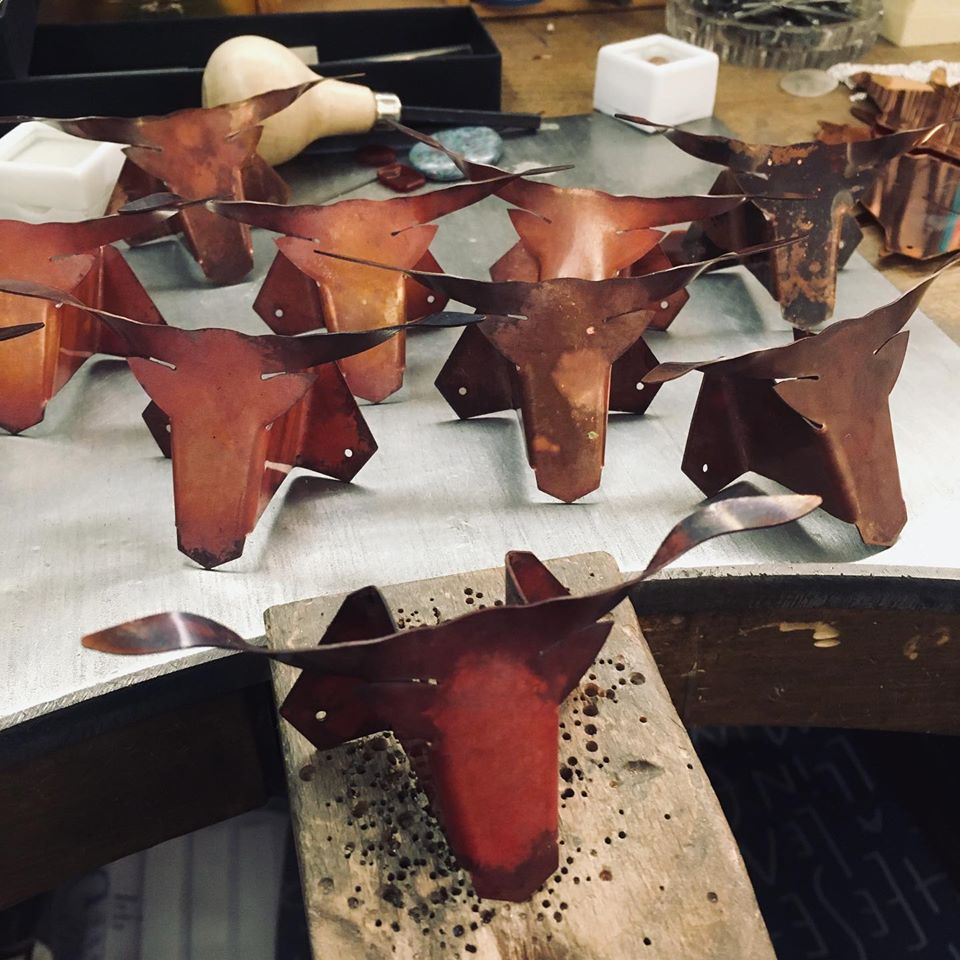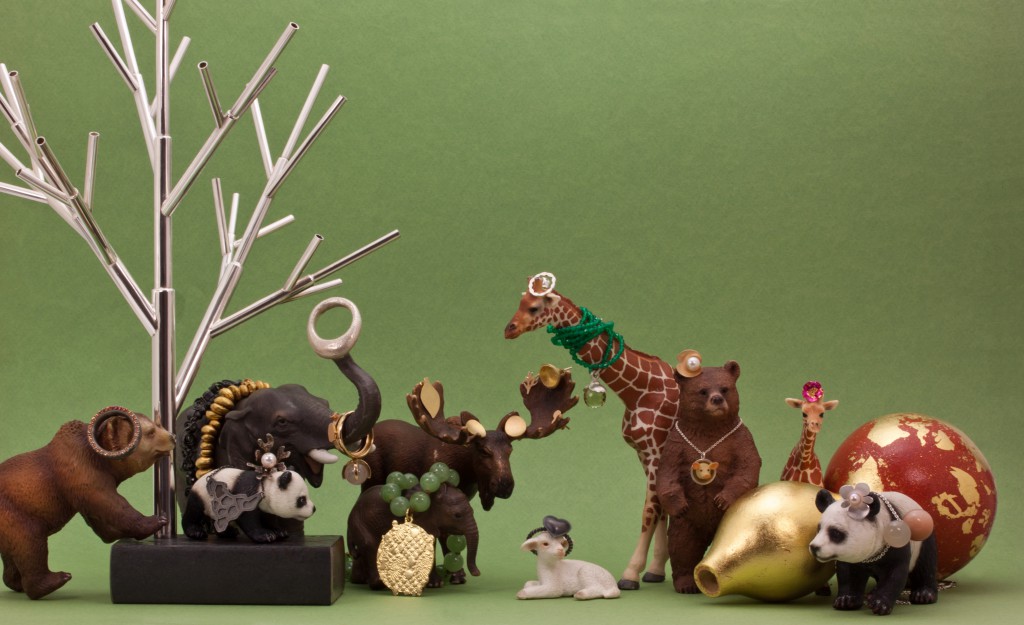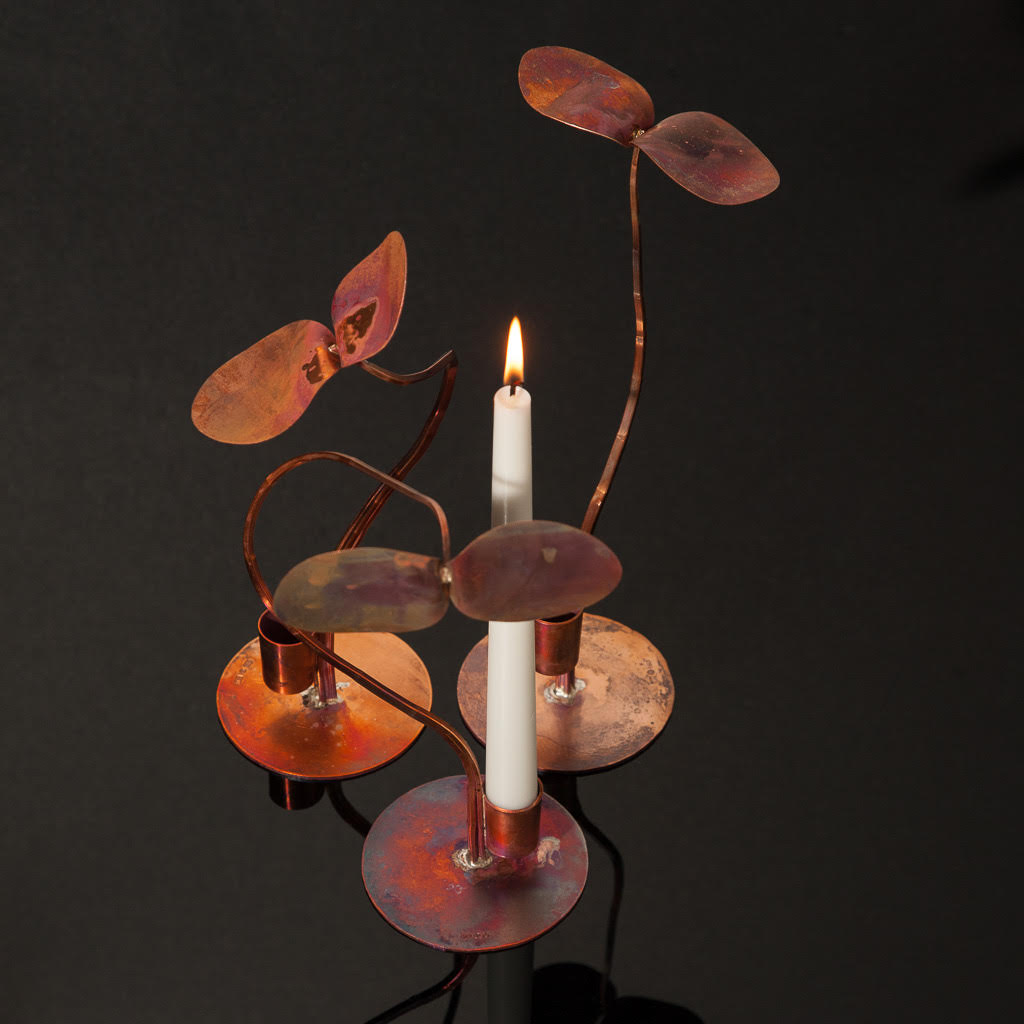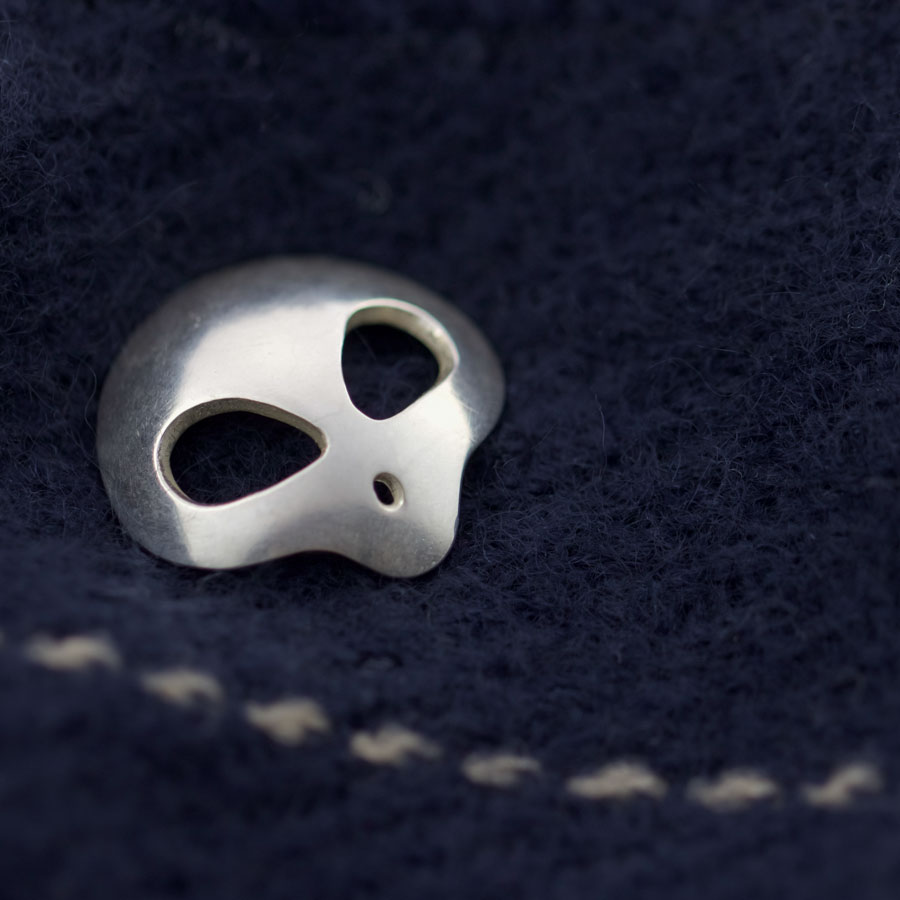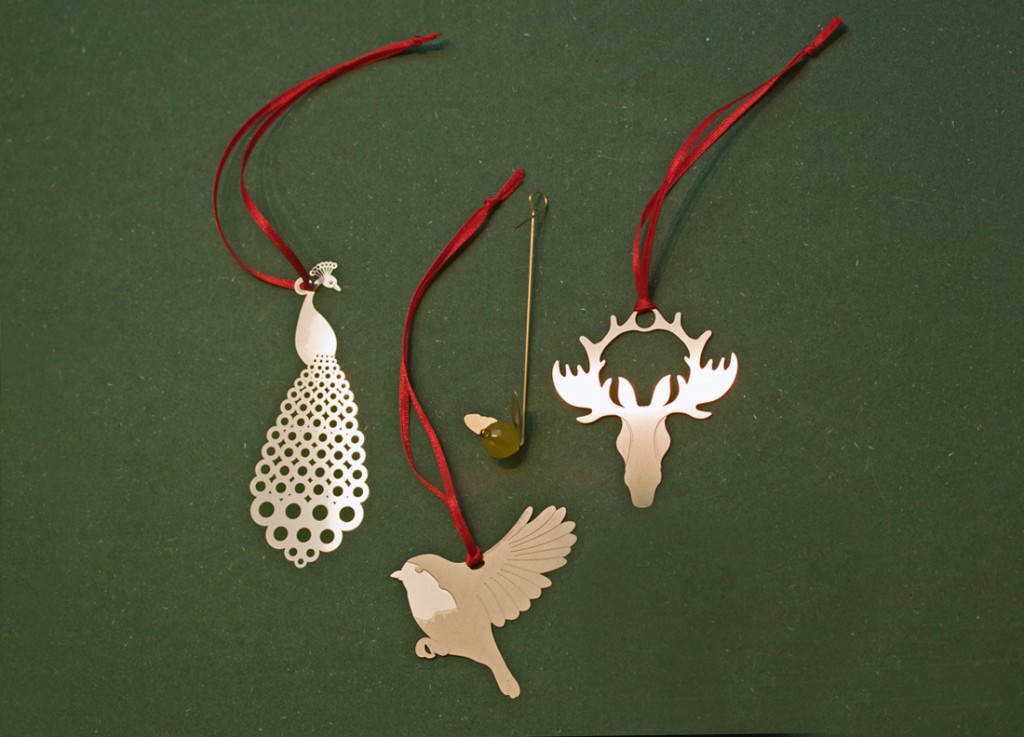
Året sista veckor på galleri LOD!
På LOD hittar du julklappar som är tillverkade lokalt. Ofta i återvunnet material och med en livslängd som kan handla om många generationer. Hos oss finns allt från etsade julprydnader i brons till smycken av guld och tekannor av silver. Allt tillverkat med samma kärlek och omsorg.
Våra juldekorationer kostar 150kr för Eriks älg, Pernillas påfågel och Petronellas rödhake. 250kr för Makis humlor och Lenas tjurar.
Tjurarna, se bild nedan, kan fungera som krokar till smycken eller som dekorationer i sig och humlorna kan byggas ihop till mobiler.
Sista veckan innan jul den 16-22 december har vi extra öppet på LOD
måndag-fredag 11-18,
lördag-söndag 11-15.
Sedan stänger vi för att fira jul och öppnar igen den 7/1.
Varmt välkomna!
